There is a widespread misconception claiming while black bears can climb trees, grizzly bears cannot. This is simply not true. Grizzly bears can, indeed, climb trees. So let’s set the record straight. Here are six facts regarding these bulky tree climbers.
1. Cubs Climb Trees Most Often
Grizzly cubs are skilled climbers. Coyotes, wolves, and other predators sometimes target young cubs as prey. A grizzly cub can scale a tree quickly to protect itself. Cubs have also been observed climbing trees for play. It seems that sometimes grizzly cubs climb just because it’s fun!
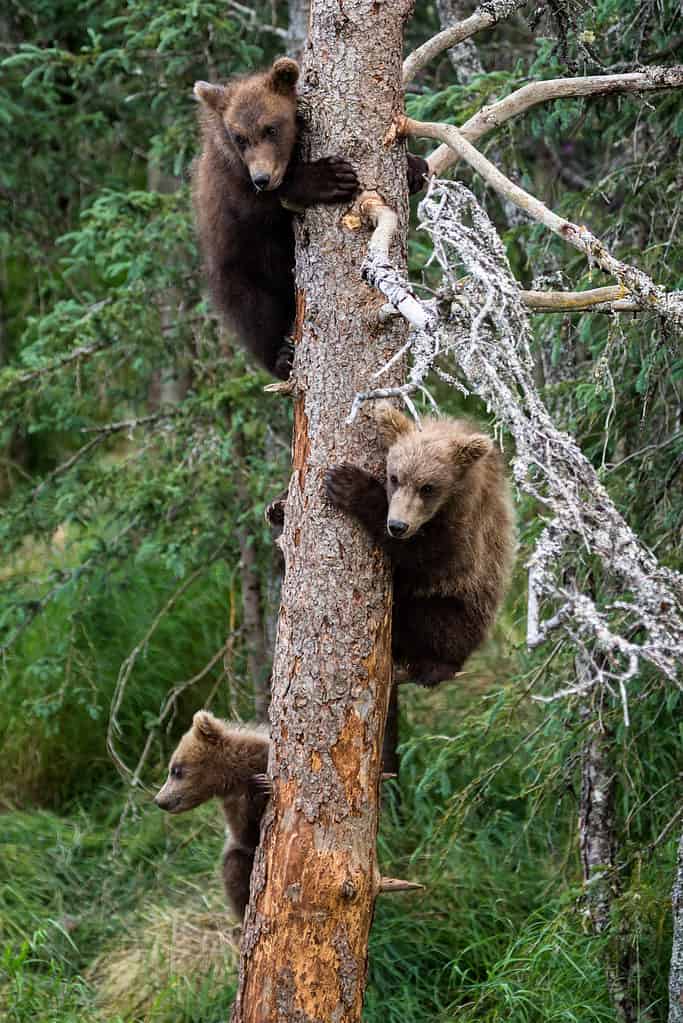
Grizzly cubs climb trees with ease.
©iStock.com/DCrane08
2. Mature Grizzly Bears Climb Trees Less Often
Adult male grizzly bears can reach 800+ pounds. While females are significantly smaller, a mature female grizzly bear can still peg the scales at 500 pounds. That’s quite a load to haul up a tree, which is why adult grizzly bears don’t climb nearly as often as juveniles. But this is where a potentially dangerous untruth must be dispelled. Just because adult grizzlies don’t climb often doesn’t mean they can’t climb at all.
3. Yes, Adult Grizzlies Can Climb Trees!
Adult grizzlies can climb trees, even if they are not as adept at tree-climbing as the smaller black bears. They are the most agile climbers of all bears.
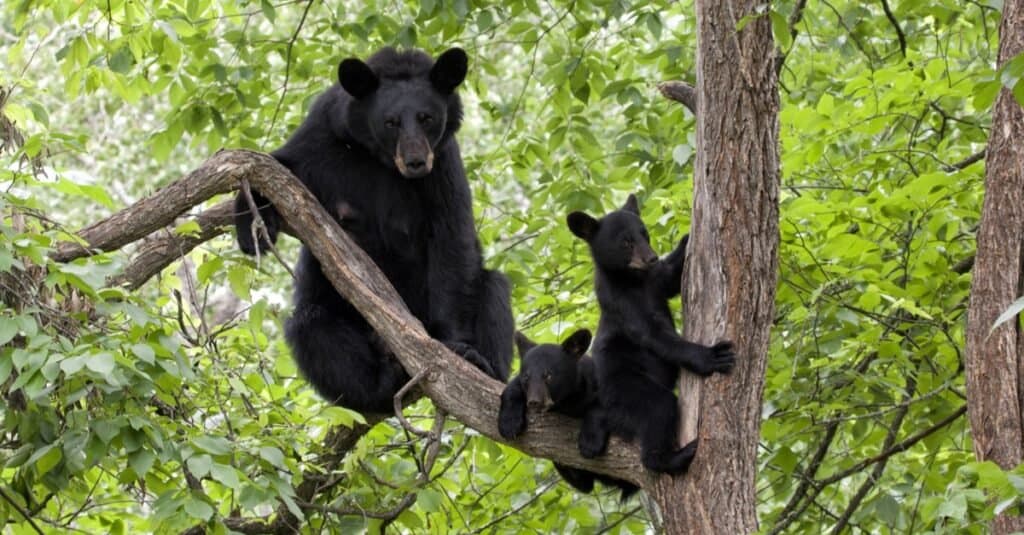
Black bears are the best climbers of all bear species.
©Debbie Steinhausser/Shutterstock.com
Black bears are equipped with curved claws that serve as hooks when moving up a tree. These claws provide the grip, while the black bear’s muscular build provides the strength. This combination allows black bears to climb trees with both agility and blazing speed. For example, these bears can complete a 100-foot vertical climb in just 30 seconds!
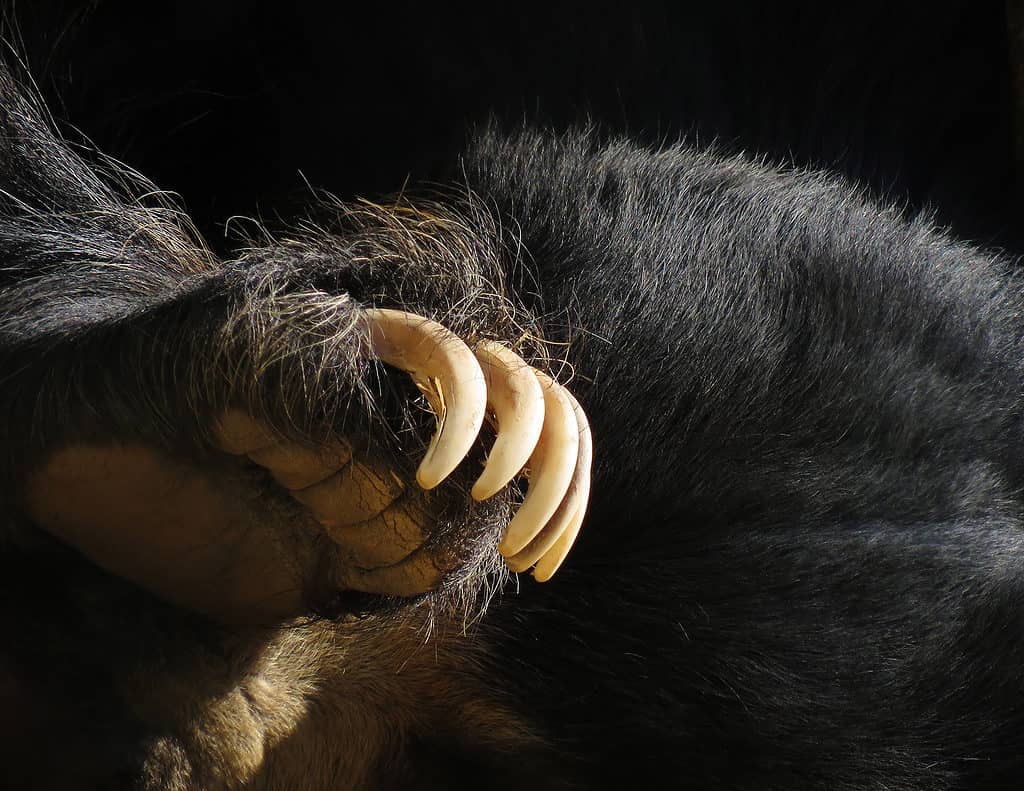
Black bear claws feature a dramatic, hook-like curve.
©iStock.com/Derikjohn
While a mature grizzly bear can’t compete with that type of speed, it can still scale a tree. Grizzly bear claws are also curved, but not as dramatically as a black bear’s. While a black bear’s claws curve like hooks, the claws of a grizzly are more like curved blades.
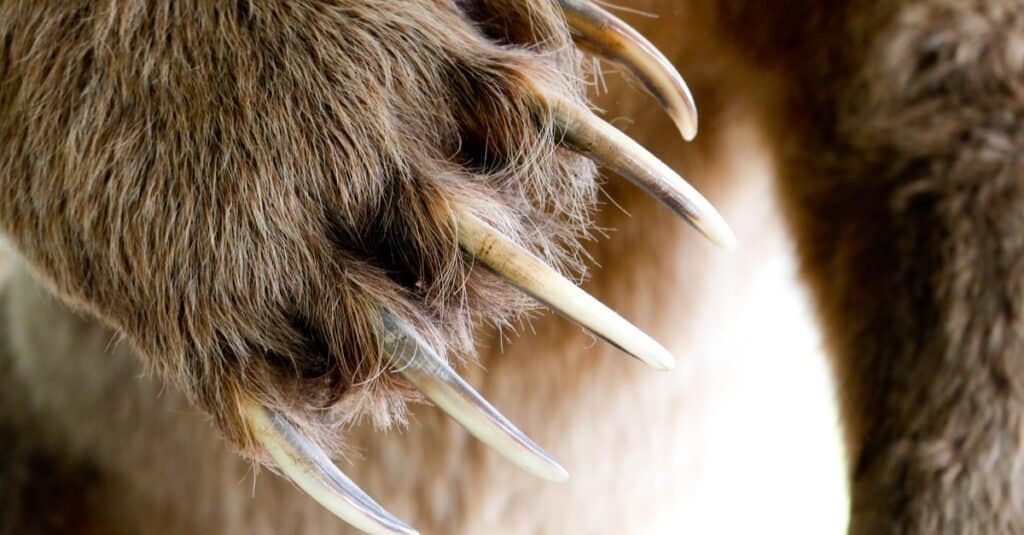
Grizzly bear claws are like curved blades.
©TheWonderWays/Shutterstock.com
Grizzly bear claws are primarily designed to slash prey. But, while its claws are not as well-suited for climbing as a blear bear’s, the grizzly bear will dig its claws into a tree and begin climbing if properly motivated. So why would a mature grizzly scale a tree?
4. Grizzlies Will Climb for Protection
One main reason a grizzly bear will climb a tree is to protect its cubs. A mother grizzly bear who feels her cubs are threatened will usher the cubs up a tree and then follow to protect them.
5. Grizzlies Will Climb for Food
Black bears are well-known for climbing trees to reach food sources. For example, wild cherries are a favorite of these bears. When the cherries are growing during the summer, black bears will spend a lot of time in trees foraging for them.
Grizzlies are also omnivores. In fact, despite the grizzly bear’s fearsome predatory reputation, up to 70% of its diet is vegetative. But the vegetation these bears consume is largely found on ground-level, such as grasses, sedges, mushrooms, and clover. But, to repeat a recurring theme, just because a grizzly rarely climbs a tree for food does not mean that it can’t or it won’t. On the contrary, these bears have been documented scaling trees to reach food sources.
6. Grizzlies Will Climb for Prey
Those food sources may even be prey animals. Grizzly bears are apex predators, and their pursuit of prey may take them up a tree. It’s redundant at this point, but it must be said yet again. It doesn’t happen often, but that doesn’t mean it can’t happen. Grizzly bears are wild and unpredictable predators.
Through the years, hikers have often been told they should climb the nearest tree if they encounter a grizzly because the bear won’t be able to follow them. This is absolutely false and could lead to disastrous consequences.
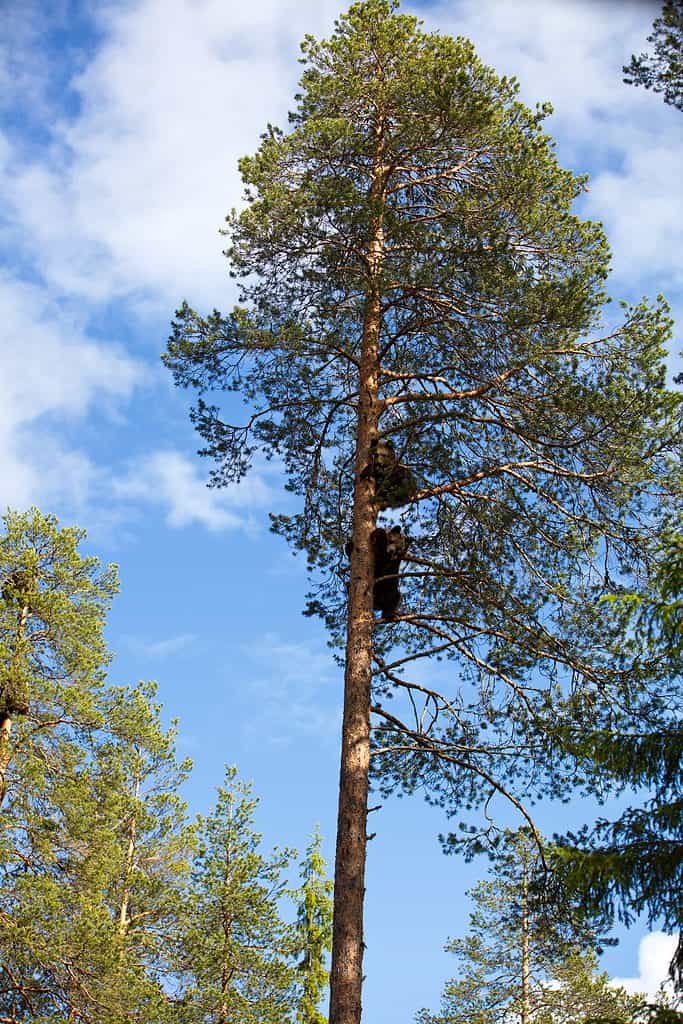
If grizzly bears can’t climb trees, someone needs to tell these two!
©iStock.com/Wirestock
What If You Encounter a Grizzly Bear?
If you encounter a grizzly bear, the National Park Service offers some life-saving advice. To start, speak in calm tones. Do not scream or yell. Slowly raise your arms above your head to make yourself look larger, but do not make sudden or threatening movements.
Do not run. This could trigger a predatory response in the bear. Grizzly bears can run up to 35 miles per hour, so it’s not a race any human could possibly win. Move away from the bear slowly and in a sideways direction. This allows you to keep your eyes on the bear but also to avoid tripping.
It is safest to hike in groups. More people will make more noise which, in turn, will allow a bear to detect their presence at a greater distance. This makes it more likely the bear will move away.
Always carry bear spray while hiking in bear country. While hikers should do everything possible to avoid a close bear encounter, bear spray is the best defense if they do come upon a bear.
And finally, despite what you may have heard, never climb a tree to escape a bear. Ever.
Can Grizzlies Swim?
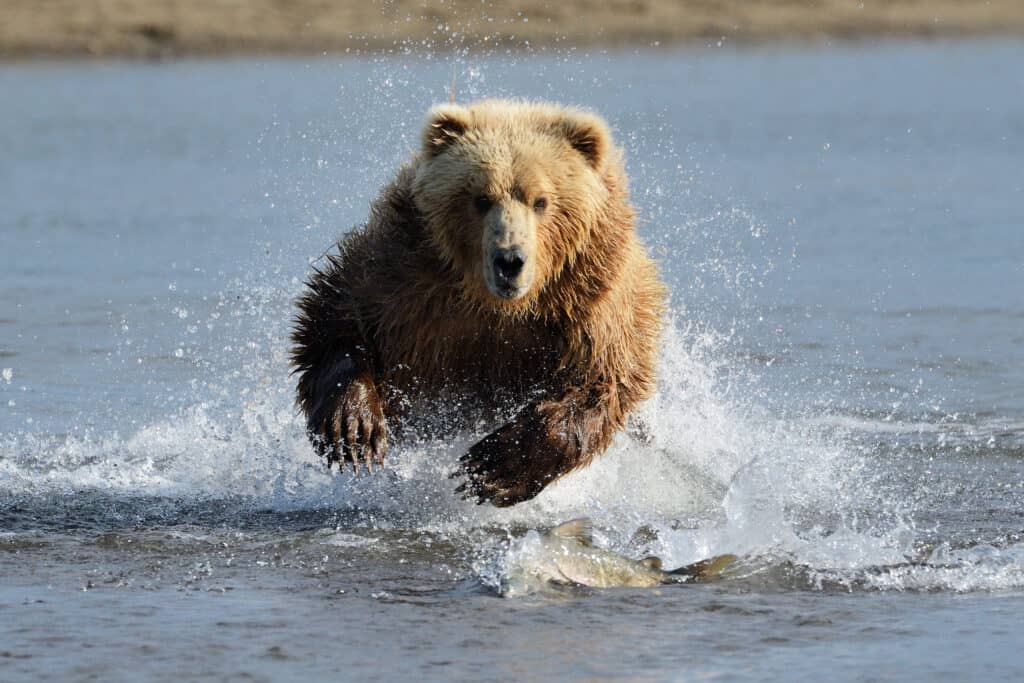
The grizzly bear has great speed, even when running in water, which helps when it is chasing salmon.
©AndreAnita/Shutterstock.com
The answer to this question is: yes. If you are thinking that water might be a good retreat from a grizzly, you may want to think again, especially in shallow water.
Grizzlies do not tend to spend much of their daily activity in deep waters and their bodies are not perfectly suited for long swims. They tend to only swim short distances when needed, and because they have a similar body structure to a dog they utilize the doggy paddle to get around in deeper waters. Furthermore, because they do have large, bulky frames, long swims can become fairly exhaustive for the massive hunters.
With that being said, grizzlies are no way near the swimmers that polar bears are. Polar bears survive by being very at home in the water.
The photo featured at the top of this post is © iStock.com/ErikMandre
Thank you for reading! Have some feedback for us? Contact the AZ Animals editorial team.






